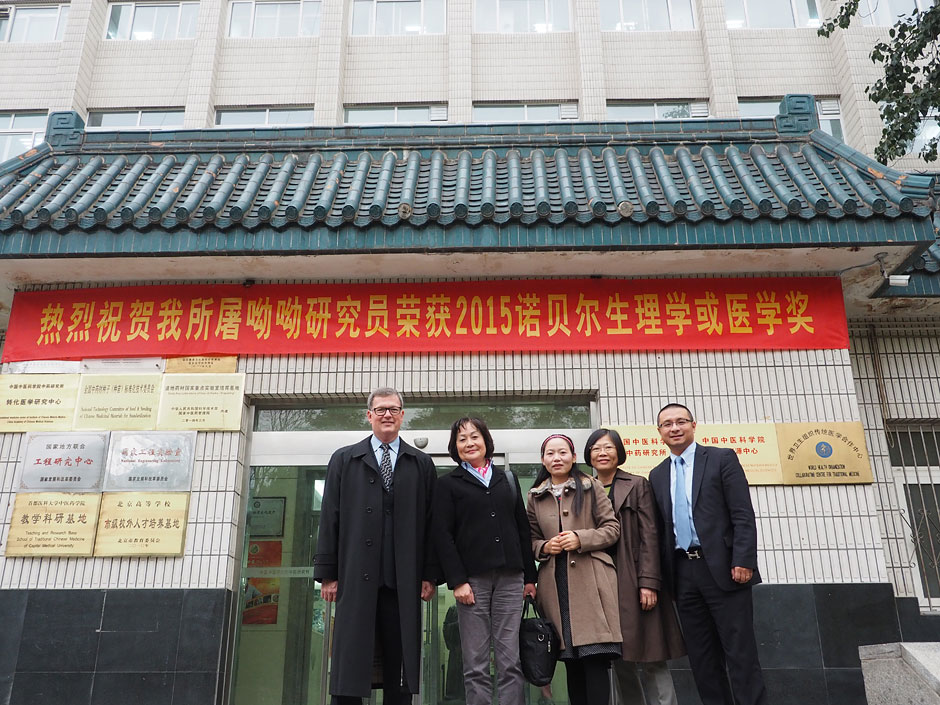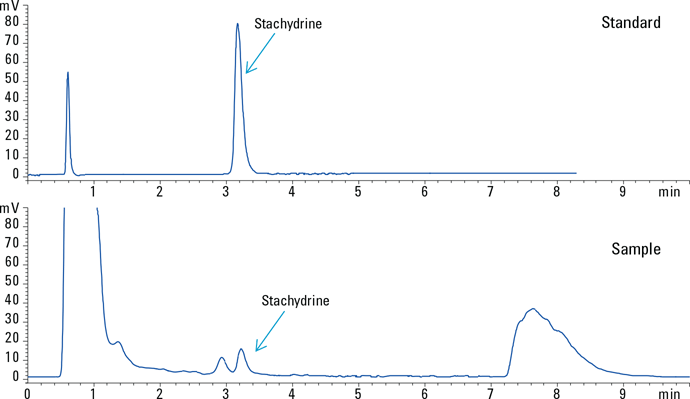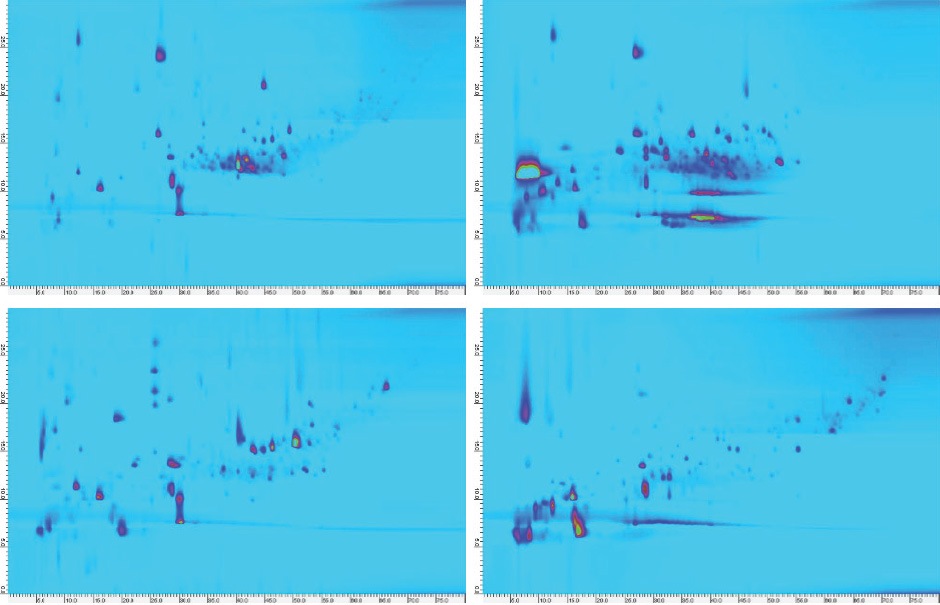Access Agilent eNewsletter January 2016

Nobel Prize-winning lab uses Agilent equipment to accelerate natural product discoveries
Ying-Zhao Chow
Agilent Senior Manager, China Life Science Sales
Steve Fischer
Agilent Director of Marketing, Academic and Government—
Life Science Research
The China Academy of Chinese Medical Sciences received a great honor in October 2015 when Chief Scientist Tu Youyou became the first citizen of the People’s Republic of China to win a Nobel Prize in the sciences. Youyou discovered artemisinin, a drug that is now part of standard antimalarial treatment and has saved countless lives throughout the world. The Academy uses multiple pieces of Agilent equipment in its research, including a variety of liquid chromatography instruments, LC/MS systems, gas chromatographs, and GC/MS systems.

Figure 1. Agilent proudly supports the work of The China Academy of Chinese Medical Sciences.

Figure 2. Agilent Poroshell 2.7 µm column delivers much faster analysis than standard USP column.
In her work, Youyou combined the study of 5,000 years of Traditional Chinese Medicine with modern medical scientific practices. When she developed artemisinin, she consulted 1,600-year-old Traditional Chinese Medicine books to find a potential therapeutic drug for malaria. She then completed many arduous tasks to isolate, purify, identify, and test the new antimalarial drug.
Although Agilent products were not used for that break-through discovery back in the 1970s, Agilent has been supporting The China Academy of Chinese Medical Sciences for many years (Figure 1). The Academy continues the work of finding the active ingredients in Traditional Chinese Medicine and making new drugs from natural products today. Agilent equipment enables these discoveries to happen much faster.
Accelerate natural product research
Researchers worldwide use Agilent LC instruments and columns to further the study of natural products. For example, Agilent Application Note 5991-3856EN describes the fast analysis of terpene lactones in Ginkgo biloba extract. Terpene lactones have been shown to inhibit platelet activating factors. The successful analysis described in the Application Note uses the Agilent 1290 Infinity LC with an Agilent Poroshell 120 SB-C18 column. The 2.7 µm column reduces solvent consumption by a factor of eight and requires one-fourth the run time—without any loss of resolution (Figure 2).

Figure 3. Stachydrine standard and plant extract analyzed on an Agilent ZORBAX RRHD HILIC Plus LC column, 2.1 × 100 mm, 1.8 µm, with evaporative light scattering detection.

Figure 4. Comprehensive 2D-LC analyses of four plants used in Chinese Herbal Medicines provided good separations for all four samples.
In another example, Agilent Application Note 5991-1047EN describes use of hydrophilic interaction liquid chromatography (HILIC) for the analysis of the polar compound stachydrine from a Traditional Chinese Medicine (Figure 3). Two isocratic methods were developed using an Agilent ZORBAX Rapid Resolution High Definition (RRHD) HILIC Plus LC column with an Agilent 1290 Evaporative Light Scattering Detector and the Agilent 6410 Triple Quadrupole LC/MS. While both methods were suitable for quantitative analysis of stachydrine, the LC/MS/MS method provided better sensitivity for low-level stachydrine detection in complex samples.
Separate complex medicinal plant extracts
A third example relates to Chinese Herbal Medicine, which uses single plants or preparations of several plants for medicinal purposes. The effectiveness of these medications depends on the synergistic effects of multiple components in the plants. These extremely complex samples benefit from analyses by comprehensive two-dimensional liquid chromatography (2D-LC).
Agilent Application Note 5991-5028EN describes the development of a comprehensive 2D-LC method for the analysis of a decoction from mulberry twigs (mori ramulus). The method takes advantage of a suitable combination of reversed-phase columns and eluents for the first and second dimensions, to provide maximum coverage of sample components. Once developed, this method is used for the analysis of decoctions from four different Chinese Herbal Medicine plants (Figure 4). Excellent separations are achieved for these very complex samples without any method adjustments.
Complete portfolio enables new discoveries
These are just three examples where Agilent instruments and columns are used to accelerate natural product research. As a global leader in life science instrumentation, Agilent provides technologies and solutions used in both natural product and Traditional Chinese Medicine research and development.
For more on the 2015 Nobel Prize in Physiology or Medicine for the discovery of the antimalarial treatment artemisinin, see the Agilent Technologies Blog.
Stay informed about the applications that are important to you
Subscribe to Access Agilent
Our free customized
monthly eNewsletter
Article Directory – January 2016
All articles in this issue
-
 What is in your beer? Find out using a Agilent J&W DB-624 Ultra Inert (UI) column with GC/MS static headspace solution
What is in your beer? Find out using a Agilent J&W DB-624 Ultra Inert (UI) column with GC/MS static headspace solution -
 Moving biologics to market with automated biopharma workflow solution
Moving biologics to market with automated biopharma workflow solution -
 Nobel Prize-winning lab uses Agilent equipment to accelerate natural product discoveries
Nobel Prize-winning lab uses Agilent equipment to accelerate natural product discoveries -
 Tip: How to detect leachables from drug container closures in pharmaceutical products
Tip: How to detect leachables from drug container closures in pharmaceutical products -
 Fast, accurate absolute-quantification of proteins and antibodies with Agilent 8800 ICP-QQQ
Fast, accurate absolute-quantification of proteins and antibodies with Agilent 8800 ICP-QQQ -
 Chevron and Agilent collaborate on new multi-element crude oil analysis technology that delivers advantages in speed, cost, and safety
Chevron and Agilent collaborate on new multi-element crude oil analysis technology that delivers advantages in speed, cost, and safety -
 Ask the Expert: Can I improve the chromatography of basic compounds on my older HPLC systems?
Ask the Expert: Can I improve the chromatography of basic compounds on my older HPLC systems? -
 More pesticides identified using Agilent Pesticide DRS Screening GC/MSD Analyzer with new high efficiency source
More pesticides identified using Agilent Pesticide DRS Screening GC/MSD Analyzer with new high efficiency source -
 Improved peak shapes for active semivolatiles with inert Agilent J&W DB-UI 8270D columns
Improved peak shapes for active semivolatiles with inert Agilent J&W DB-UI 8270D columns
Figure 1

Agilent proudly supports the work of The China Academy of Chinese Medical Sciences. Pictured are Jack Wenstrad and Jiwen Cai, Agilent University Relations and Academic Program management—with Ying Chow, Ting Yang, and Fang Chen of Agilent China Life Sciences sales.
Figure 2

Agilent Poroshell 2.7 µm column delivers much faster analysis than standard USP column.
Figure 3

Stachydrine standard and plant extract analyzed on an Agilent ZORBAX RRHD HILIC Plus LC column, 2.1 × 100 mm, 1.8 µm, with evaporative light scattering detection.
Figure 4

Comprehensive 2D-LC analyses of four plants used in Chinese Herbal Medicines provided good separations for all four samples.